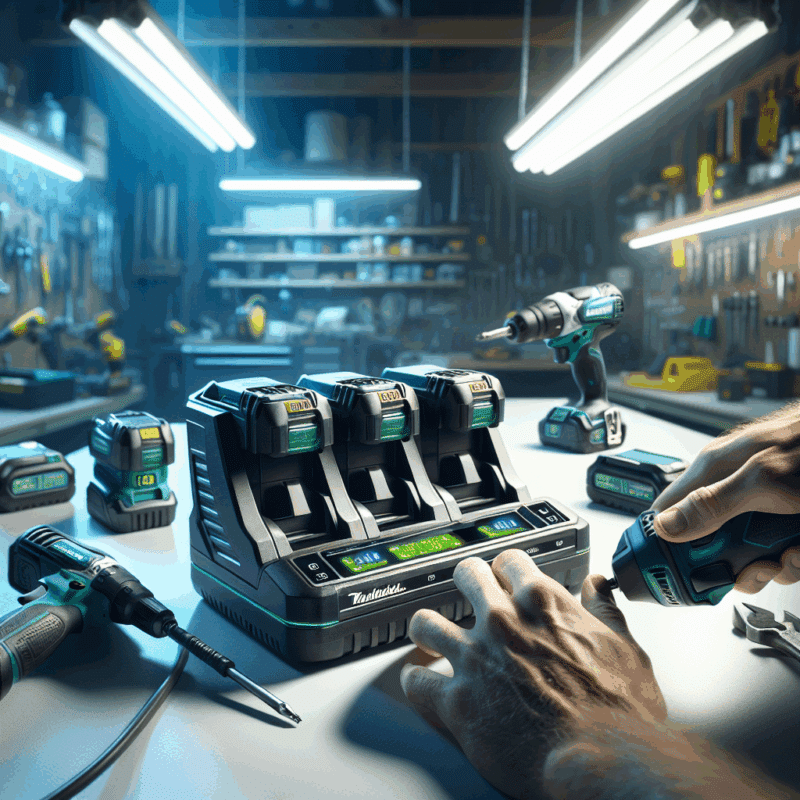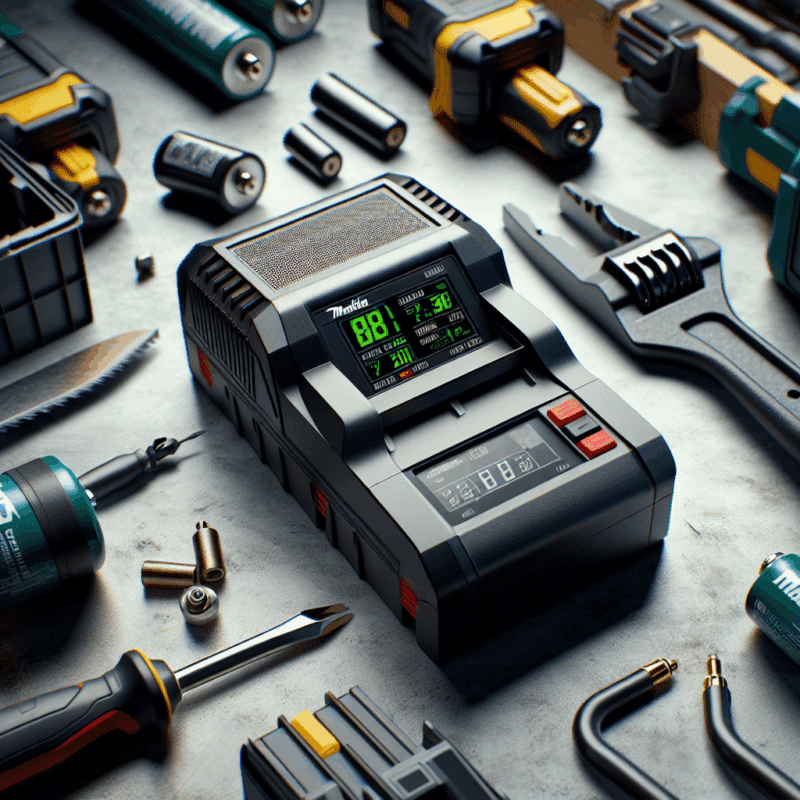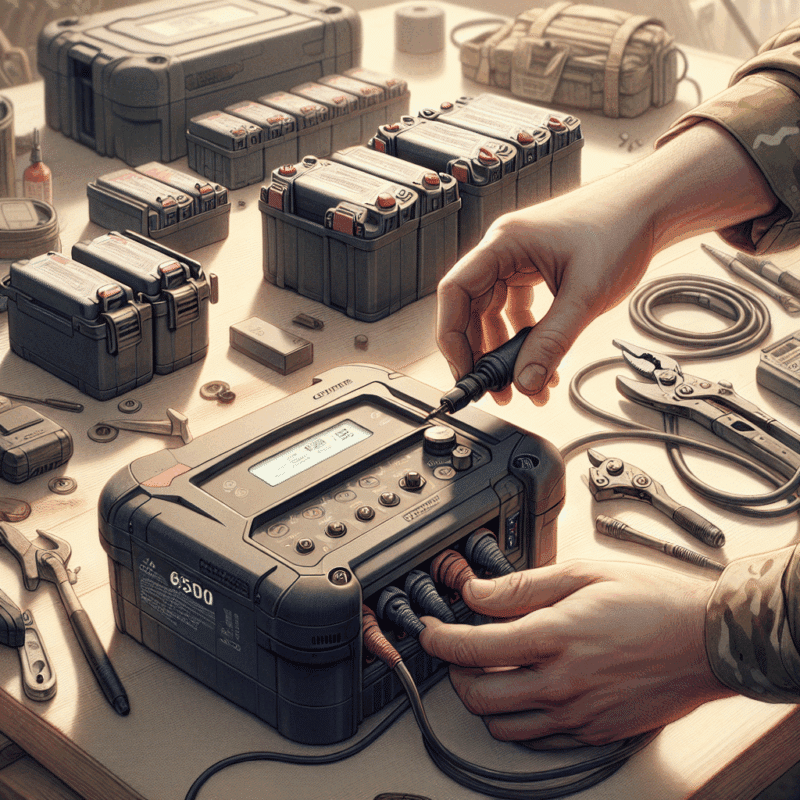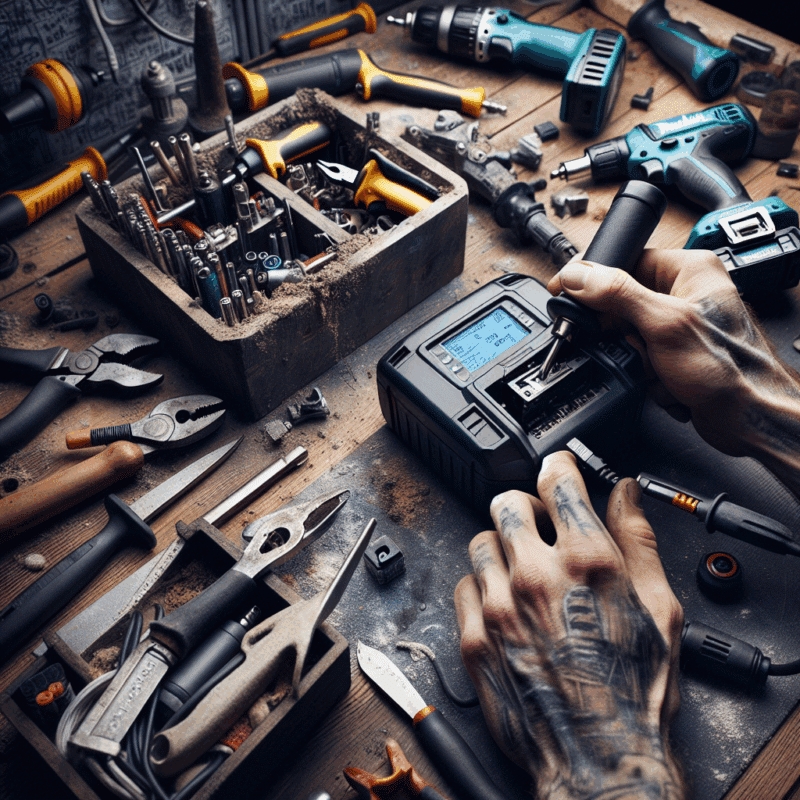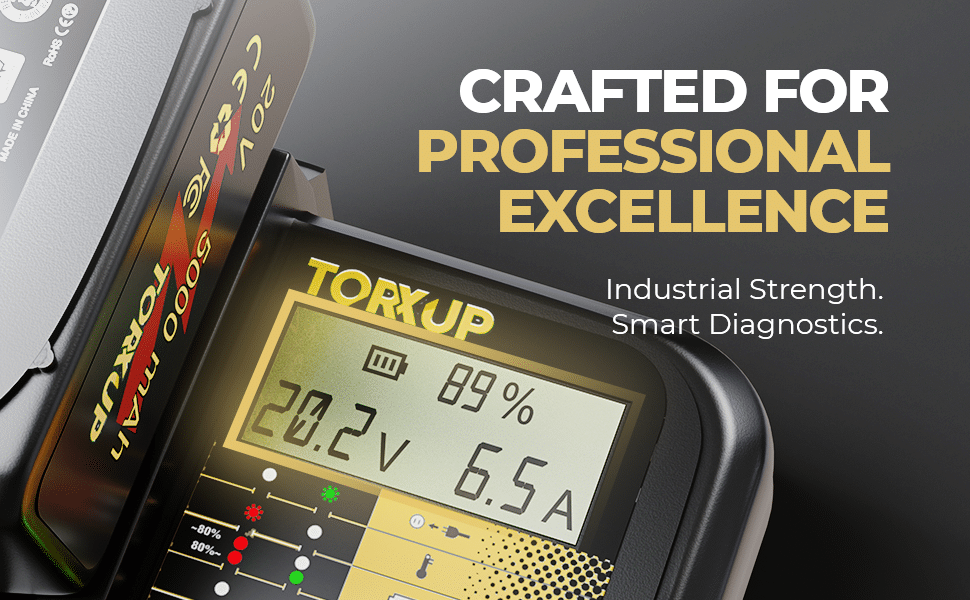What Makes a Makita Compatible Charger Certified? CE & Safety
In This Article
- Only purchase makita compatible chargers with visible CE or UKCA certifications.
- Counterfeit chargers present risks like overheating, fire, and electric shock.
- Check for authenticity via spacing and font of CE marks.
- Refer to a Declaration of Conformity to validate product compliance.
- DIYers and trade professionals alike share risks and responsibilities.
- Aftermarket chargers can be reliable if properly certified.
- Always purchase from verified, reputable sellers or tool suppliers.
- Use UK consumer protection laws to demand safety and refunds when applicable.
Why Certification Matters for Makita-Compatible Chargers
Understanding the CE Certification Process
The CE certification is a mandatory conformity marking for products sold within the European Economic Area (EEA). When applied to power equipment like a makita compatible charger, this mark indicates conformity with health, safety, and environmental protection standards. Without CE certification, a charger could pose serious risks—including electrical fires and battery damage. The process of CE certification involves rigorous testing, including electromagnetic compatibility (EMC) checks, compliance with low-voltage directives, and verification of construction. Manufacturers must also maintain technical documentation and produce a Declaration of Conformity, which confirms that the product meets all applicable EU legislative requirements. Understanding this process helps consumers appreciate the stringent routes certified products must pass through to be eligible for sale in trusted marketplaces across the UK and Europe.
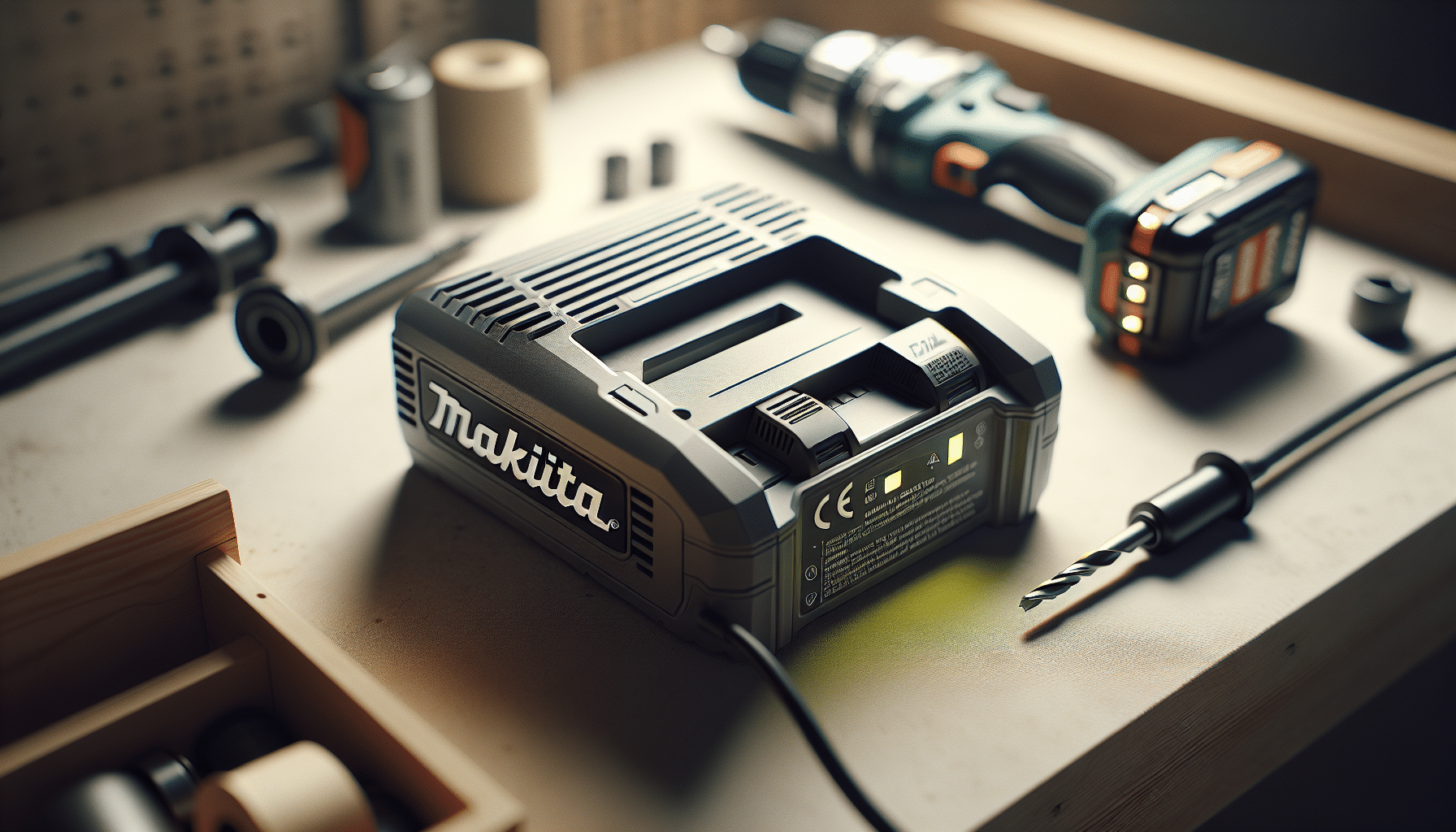
How to Check if a Charger Is Certified
What to Look for on Labels and Packaging
When purchasing a makita compatible charger, the first thing to inspect is the packaging. Genuine compliant chargers will feature the CE mark clearly printed—typically on the product casing, user manual, and box. However, not all CE marks are created equal. Be wary of a CE label that looks suspiciously spaced or slightly off in font. These could indicate counterfeit goods with no legitimate certification. Check the product documentation for a Declaration of Conformity signed by the manufacturer or importer. This document should reference testing directives like LVD 2014/35/EU and EMC 2014/30/EU. A model number should match across packaging, device, and manual. Additionally, reputable sellers usually display this information on the product’s sales page. If it’s not visible or feels incorrect, err on the side of caution. Certified units may also display a UKCA mark, which applies to goods sold in Great Britain post-Brexit.
“Always validate the CE mark and ask the seller for technical documentation. If they hesitate, that’s a red flag.” – The Chartered Institute for Trade Standards
Key Safety Features to Expect
Certified chargers offer numerous features designed to protect both the user and the tool. These include overcharge protection, temperature control systems, and short-circuit prevention mechanisms. A certified makita compatible charger is typically equipped with auto shut-off features that prevent overheating—crucial for safeguarding lithium-ion batteries. Anti-spark circuits, voltage stabilisers, and reinforced connection points are also hallmarks of a compliant device. In addition, genuine chargers are constructed from fire-resistant materials and undergo heat dissipation testing to minimise the risk of internal meltdowns. Chargers lacking CE certification often skip these essential components to reduce production costs, placing users at significant risk. By contrast, manufacturers of certified units are legally obligated to pass European and British electrical safety standards, ensuring a higher level of reliability and consumer protection.
Common Risks of Non-Certified Chargers
Using a non-certified charger greatly increases the likelihood of accidents and equipment failure. For Makita tool owners, this could mean permanent damage to batteries, compromised performance, and even injury. One common risk is electrical overload, where the charger delivers improper voltage to the battery—potentially causing swelling, leakage, or combustion. Another less obvious hazard is electromagnetic interference, which can disrupt nearby electronic devices or tools in the workshop. Non-compliant models may also lack essential insulation or grounding systems, increasing the chance of electric shock. According to multiple safety regulators, substandard chargers are a leading source of residential fires caused by electrical faults. Given these serious threats, investing in a fully CE-certified makita compatible charger is not just a luxury—it’s a responsibility to yourself and others.
Testing Procedures Used in Certification
The road to achieving CE certification for a makita compatible charger involves a thorough series of laboratory tests. These include mechanical stress testing, heat resistance evaluations, and electromagnetic analyses. For instance, the EMC testing process determines if the charger emits levels of electromagnetic radiation that can interfere with other devices. Additionally, the construction is examined under the Low Voltage Directive (LVD) to ensure safe insulation distances, grounding continuity, and dielectric strength. Functionality tests are also vital, ensuring the power regulation circuit supplies consistent output regardless of input fluctuations. Listed manufacturers must maintain meticulous test records and production blueprints to keep their certification status. Crucially, notified bodies—accredited third-party organisations—may verify this documentation during random market surveillance exercises. Buyers should favour chargers tested under the oversight of such independent authorities when available.
CE Certification vs UKCA: What’s the Difference?
Post-Brexit, the UK introduced its own conformity assessment marking known as UKCA (UK Conformity Assessed). While similar to the CE mark in terms of intent and standards, UKCA applies only to goods being sold in England, Scotland, and Wales. Northern Ireland continues to observe CE compliance under the Northern Ireland Protocol. A legitimate makita compatible charger sold in Great Britain should bear the UKCA marking if it was manufactured or imported after 1 January 2023. The transition period allowed dual CE and UKCA markings, but now stricter enforcement means UKCA must be solely present for most categories. Although both markings signal adherence to essential health and safety benchmarks, consumers should understand their geographical restriction. For maximal utility and interchangeability, a charger bearing both marks is ideal—especially if you travel or distribute tools across multiple regions in the UK and EU.
How to Spot Fake Certification Labels
Counterfeit CE marks are unfortunately common amongst cheap imports. These fake labels often bypass safety standards and deceitfully boost consumer confidence. Look closely at the CE symbol—a genuine mark has the “C” and “E” spaced appropriately, with the correct proportional geometry. Glyptic discrepancies such as uniform font thickness or misplaced spacing often denote fakes. Equally important is assessing the seller’s credibility. A genuine supplier of makita compatible charger devices will readily provide lab test documents, product conformity sheets, and contact information for technical assistance. Fraudsters, on the other hand, may hide behind offshore addresses and lack VAT registration. Consumer protection bodies recommend avoiding online marketplaces that fail to authenticate third-party vendors. Always cross-reference a product’s barcode with known distributor databases and inspect for additional compliance marks, including RoHS and WEEE.
CE Marking for DIYers vs Trade Professionals
Whether you’re a casual user or a full-time tradesperson, safety obligations remain non-negotiable. For DIYers, it’s tempting to cut corners and purchase the cheapest makita compatible charger available online. However, professionals are often held to higher legal and insurance standards. If an uncertified charger causes a fire or malfunction on-site, liability could fall squarely on the user or employer. That’s why reputable trade suppliers enforce CE marking and issue compliance certificates during billing. DIY users benefit from the same level of protection by investing in CE and UKCA-approved equipment. It’s not just about meeting legal criteria—it’s about preserving tool longevity and ensuring operational safety. Some vocational courses now even include CE label identification as part of tool management education, highlighting how central these considerations have become in responsible construction and repair work across the UK.
Are Aftermarket Makita Chargers Reliable?
Aftermarket chargers—products not made by the original toolmaker but designed to be compatible—represent a substantial portion of accessories in the UK market. A compliant aftermarket makita compatible charger can absolutely be reliable and even offer innovative features at competitive pricing. However, reliability depends largely on regulation adherence. High-quality aftermarket models should still carry a proper CE mark and meet the same standards as OEM chargers. Brands that invest in safety testing, publish self-certification documents, and support warranties are worth consideration. On the other hand, low-cost, unbranded versions may skip testing altogether. They might function temporarily but degrade over time, pose fire hazards, or permanently damage your battery packs. It’s recommended to purchase aftermarket chargers from recognised UK retail chains or verified tool suppliers who maintain regulatory transparency. And always avoid any product or merchant that refuses to disclose test results or certification status.
Consumer Rights & Responsibility in the UK
Under UK law, consumers have clearly defined rights with regard to product safety and performance. If a makita compatible charger fails to meet the stated safety guarantees or lacks proper certification, you are entitled to a refund or replacement under the Consumer Rights Act 2015. Moreover, traders are legally responsible for ensuring the goods they sell meet UK safety standards. You should collect and retain all purchase receipts and request manufacturer documentation when in doubt. Products that fail prematurely or present hazards may even fall within the remit of the Consumer Protection Act 1987, allowing for compensation claims in case of personal injury or property damage. Shoppers can also report dangerously non-compliant chargers to local Trading Standards offices. Organisations like Learn more about Power Tool Charger Certification & Safety and Makita charger compatibility across battery types offer resources that help consumers understand their entitlements and file complaints against non-compliant vendors.
Wrap-Up: Choosing the Right Charger for Safety
When it comes to purchasing a makita compatible charger, prioritising safety and compliance is not only advisable—it’s essential. With so many chargers on the market today, particularly from unregulated online marketplaces, it’s easy to fall prey to unsafe or counterfeit options. By seeking chargers with proper CE or UKCA markings, verifying declarations of conformity, and purchasing through reputable channels, users significantly lower their risk of electrical hazards and equipment failure. Don’t let short-term savings put your tools or your safety in jeopardy. Take the time to check documentation, ask questions, and choose certified chargers that align with both UK and European standards. Your battery longevity, job site safety, and legal peace of mind depend on it. For a list of verified charging accessories, consult Read a related article and check comparison data from Understanding EU product compliance roles.
Great guide on makita-compatible-charger-certification-ce-safety – Community Feedback
How do I know if a Makita compatible charger is certified?
Genuine certification is shown by a valid CE mark, documentation, and adherence to UK/EU safety standards. Check for official markings and test reports.
What safety features should a certified Makita charger have?
Certified chargers include overcharge, short-circuit, and thermal protection as well as compliance with electrical insulation and fire safety regulations.
Why is CE certification important for compatible chargers?
CE certification shows a charger meets all legal requirements for safety, performance, and product liability in the UK and EU, reducing risk of hazards.



